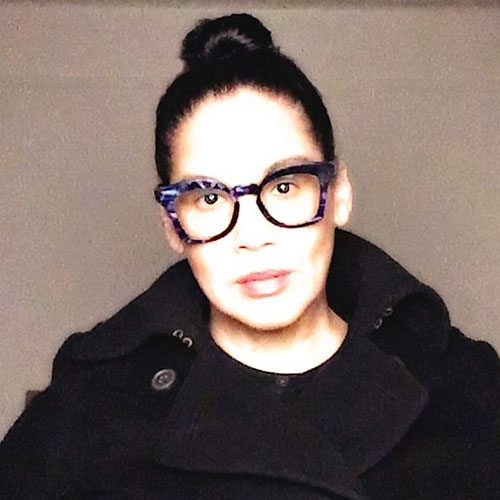
August 22, 2017; Artsy
Images are important, particularly images of people of color, which are often negative or missing altogether. Nonprofits often don’t do much better. In our work, images are often used to prove the need for our work or the success of our interventions. Elia Alba, a multimedia artist with roots in the Dominican Republic who identifies as Black and Latina, has decided to address the relative lack of images of people of color with her project, The Supper Club.
Influenced by the archetypal photographic portraits of magazines like Glamour and Vanity Fair, Alba began “reimagining fellow artists of color in fantastical images” reminiscent of an Afrofuturist aesthetic.
For each of her subjects, she dreamed up a tableau and accompanying moniker that characterized their artistic practices…Hank Willis Thomas, known for his critically incisive, politically charged artwork addressing race in America, becomes “The Professor,” standing amid what appears to be a high school history classroom. Abigail DeVille, whose transporting sculptures and installations suggest temporary structures or otherworldly spaceships assembled from detritus, is “The Pulsar.” Dressed like a psychedelic warrior from the future, she emits rays of green light from her body.
Five years and 60 portraits later, Alba’s icons will appear at New York’s 8th Floor gallery in September.
Afrofuturism is a cultural aesthetic that blends science fiction, magical realism, and Afrocentricity. In a New York Times article last year, headlined “Afrofuturism: The Next Generation,” Ruth La Ferla described the current resurgence of Afrofuturism.
In part, Afrofuturism, an aesthetic dating roughly from the 1970s, has taken on a new public face through a new generation of recording artists—Erykah Badu, Missy Elliott and Janelle Monáe among them—who have given it not only a voice, but also a look. You will likely know it when you see it: a high-shine mash-up of cyborg themes, loosely tribal motifs, android imagery and gleaming metallics that might be appropriate for a voyage to Pluto’s outer reaches.
Sign up for our free newsletters
Subscribe to NPQ's newsletters to have our top stories delivered directly to your inbox.
By signing up, you agree to our privacy policy and terms of use, and to receive messages from NPQ and our partners.
The origin of Afrofuturism is often traced back to Sun Ra’s 1972 film Space is the Place. This cult classic uses notions of space and the travel to liberate black people from Earth’s “pejorative climate of discrimination” and “‘second-class’ citizenship,” allowing them to project liberatory black identities into their future. In fact, departure from stereotypical assumptions about black identity is one of the central concepts of Afrofuturism. It is not surprising that at this point in space and time, with the resurgence of explicit anti-Black rhetoric and violence, Afrofuturism is making a comeback.
La Ferla agrees.
Its latest incarnation seems timely, if not downright inevitable. “With the diversity of the nation and world increasingly standing in stark contrast to the diversity in futuristic works, it’s no surprise that Afrofuturism emerged,” writes Ytasha L. Womack, who chronicled and popularized the evolution of the genre in her 2013 book, Afrofuturism: The World of Black Sci-Fi and Fantasy Culture.
Alba’s first iteration of The Supper Club series was supported by Recess, a nonprofit art space. In Artsy’s recent article on Alba, “Elia Alba Is Turning Artists of Color into Fantasy Icons,” Tess Thackara wrote,
The format for these gatherings was quite simple: invite a group of POC artists to share a meal; serve up some comfort food (Alba favors chicken and rice dishes, family style); and lead with a discussion topic centered on race, or other issues that intersect with it. What emerged from those early talks, however, came as a surprise to Alba, so much so that she felt compelled to continue organizing more iterations in different venues. The group would visit a restaurant, order takeout at an artist’s apartment, or stage a home-cooked meal at which Alba would serve her signature mini-empanadas. “It was quite eye-opening for me,” she says. “There was a lot of division among folks of color. There was also division among African Americans and Latinos…Dinners that followed the deaths of Eric Garner, Michael Brown, and Tamir Rice, and the mass shooting in Orlando, took on particular urgency as the conversations grew more political.
This aesthetic is prevalent in current black-led social movements. In 2015, Walidah Imarisha and Adrienne Marie Brown edited Octavia’s Brood: Science Fiction Stories from Social Justice Movements. The book refers to, and honors the work of, black science fiction writer Octavia Butler, who’s power-laden stories captured the imagination of many social change leaders of color, including myself. The back cover of the book reads, “Whenever we envision a world without war, without prisons, without capitalism, we are producing visionary fiction. Organizers and activists envision, and try to create, such worlds all the time.”
Alba calls her images “beauty shots.” She sees her work, which is addition to images, displays transcripts from the supper series conversations, as an empowerment project that reimagines black people as powerful and beautiful. She concluded, “It’s about reimagining icons and perceptions of what is beautiful—and who is beautiful.” The images and transcripts will be published as a book in 2018.—Cyndi Suarez













